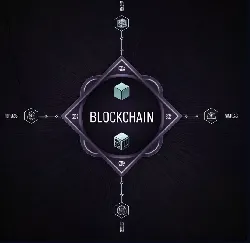The Problem with Weak Sources of Randomness in Ethereum Smart Contracts

Generating truly random numbers in smart contracts might seem simple,but in practice, it's one of the most difficult tasks in blockchain development. Many applications, such as lotteries, gamified dApps, and decentralized finance (DeFi), depend on randomness to function fairly. However, on Ethereum, the most commonly used random number sources,like block.timestamp or blockhash,are easily manipulated.
Why Randomness Matters in Smart Contracts
Randomness is critical for fair outcomes in smart contract scenarios such as:
-
Selecting a winner in a lottery
-
Shuffling a deck in a blockchain-based card game
-
Randomly assigning NFT traits
-
Determining lucky airdrop recipients
If the randomness isn’t secure, users can cheat the system, drain funds, or create an unfair experience,leading to lost trust and potential legal trouble for developers.
❌ The Flawed Randomness Sources in Ethereum
Many developers (especially those new to blockchain) rely on on-chain attributes to generate randomness:
-
block.timestamp -
block.difficulty -
block.coinbase -
block.number -
blockhash(uint blockNumber)
While these attributes may look random, they’re not unpredictable. They can be influenced by miners or validators who produce blocks, especially if high-value outcomes are at stake.
Real-World Exploit Risk:
Imagine a betting dApp that uses block.timestamp to pick a winner. A miner could delay block production slightly or choose a favorable timestamp to tilt the odds in their favor—especially when large amounts of ETH are involved.
Why Randomness Is So Hard on the Blockchain
Unlike typical web applications that can call Math.random() in JavaScript or use secure APIs in Python, smart contracts run in a deterministic environment. That means every Ethereum node must be able to reproduce the same outcome every time a contract is run.
This makes true randomness (which by definition is unpredictable) incompatible with on-chain execution,unless we use specific workarounds.
What’s the Impact of Weak Randomness?
If attackers can predict or manipulate your contract’s random outputs, they can:
-
Win lotteries unfairly
-
Exploit games for financial gain
-
Undermine dApp credibility
-
Drain funds from seemingly fair protocols
This can cause financial losses, community backlash, and even legal issues depending on the application’s nature.
Best Practices for Secure Random Number Generation
1. ✅ Use Verifiable Random Functions (VRFs)
Services like Chainlink VRF provide cryptographically secure and verifiable randomness. Each random output comes with a proof that it was generated fairly.
-
Use when: You need a trust-minimized, tamper-proof random source.
-
Bonus: Users and auditors can independently verify the randomness was not manipulated.
2. Implement Commit-Reveal Schemes
This is a simple but powerful method:
-
In commit phase, users submit a hashed version of their input (e.g.,
keccak256(secret)). -
In reveal phase, users submit the actual value.
This prevents players from changing their values after seeing others', reducing manipulation in multiplayer or competitive games.
3. Rely on Trusted Oracles
Third-party oracles like Provable (formerly Oraclize) can fetch off-chain random values from secure APIs like random.org.
Warning: Always use multiple oracles if possible to avoid a single point of failure or manipulation.
4. Use Hybrid Randomness Techniques
Combine on-chain attributes with off-chain oracles or VRFs for additional unpredictability. While block data alone isn’t secure, when mixed with secure external entropy, it can enhance randomness robustness.
5. Conduct Regular Audits
Randomness-related vulnerabilities are common, especially in gaming and NFT dApps. Ensure all contracts are audited by security professionals and tested with adversarial scenarios.
6. Stay Updated on Security Practices
According to OWASP's Top 10 Smart Contract Weaknesses, Insecure Randomness ranks among the most common attack vectors. Follow updates from organizations like OWASP, Consensys Diligence, and Chainlink Labs to stay ahead.
With AuditLensPlus, you can uncover vulnerabilities in your smart contracts quickly and cost-effectively, empowering you to take the right steps toward more secure and robust code.
Final Thought: Randomness Isn’t Optional—It’s Foundational
If your dApp uses randomness, treat it like a critical security component. Weak randomness is like leaving the front door unlocked in a high-stakes poker game.
By implementing proven methods like VRF, commit-reveal, and multi-source entropy,while avoiding chain attributes as the sole source,you'll build fairer, more trustworthy, and secure smart contracts.
Our Solution:
Sources:
https://owasp.org/www-project-smart-contract-top-10/2025/en/src/SC09-insecure-randomness.html
https://swcregistry.io/docs/SWC-120







